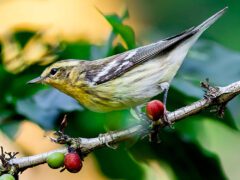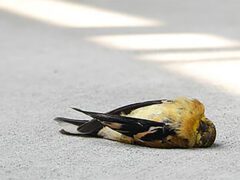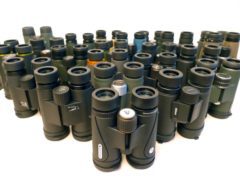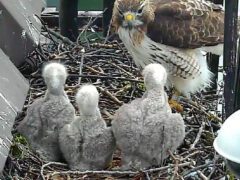The Four Keys to ID
- Size & Shape
A fairly small hawk with broad wings and long secondaries, giving a bulging outline to the trailing edge of the wing. Despite its common name, the tail is not particularly short compared to other buteos.
Relative Size
Larger than a Mississippi Kite, slightly smaller than a Red-shouldered Hawk; similar in size to Broad-winged Hawk.

 between crow and goose
between crow and gooseMeasurements
- Both Sexes
- Length: 15.3-17.3 in (39-44 cm)
- Weight: 13.6-16.9 oz (385-480 g)
- Wingspan: 32.7-40.5 in (83-103 cm)
© Jorge Torres Apolo / Macaulay Library
- Color Pattern
- Behavior
- Habitat
Regional Differences
North American nesters belong to subspecies fuliginosus, which is medium brown above (in the light morph), with brown at the side of the neck, unlike South American brachyurus, which is quite black above and lacks brown on the neck.
































